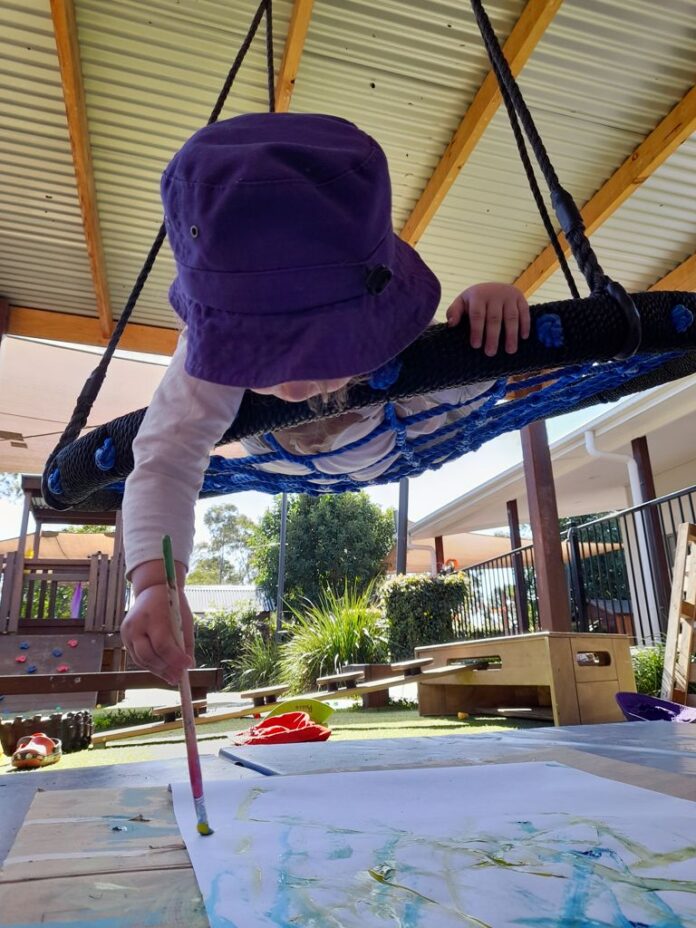An internationally recognised stereotype of modern Australia is that of athletes, weekend sports and physically active citizens enjoying the sun outdoors. However, when we begin to delve deep into the research and studies in relation to physical literacy, we realise that Australia is a nation in crisis within all stages of childhood. For example, Australia’s overall score for physical activity in the 2022 Active Healthy Kids Australia Report was D-minus; the Global report published by the World Health Organisation in the Lancet Child Adolescent Health has reported Australia as one of the worst performers, ranking 140 out of 146 countries (Guthold et al., 2020).; and the recent PLAY Spaces and Environments for Children’s Physical Activity (PLAYCE) Study showed that less than one third of children meet the recommended three hours per day of physical activity. Most alarmingly, this study also found that less than 8% of children meet this recommendation whilst attending an early childhood education and care service.
Sally Goddard Blythe states that children learn with their bodies before they learn with their brains (Goddard & Lazarev, 2018). So, are we doing enough within the education sector to provide children with the freedom, space and physically challenging environments to support physically active play, full of spontaneity, risk-taking, exploration and discovery?
Over several months in 2023 our team of educators placed a lens over movement and physical literacy, researching the physical side of play and the power behind movement in children’s learning
Movement and language
With modern society focusing on the importance of more cognitive learning domains such as language and literacy, our team wanted to delve deeper into how these developmental domains are interconnected. With the belief that movement is a child’s first language, further ingrained by careful, intentional observation of our infant and toddler environments, sensitive listening pedagogy was embedded as regular practice alongside meaningful recognition and responses delivered by each educator.
As an infant leant inward towards a familiar educator, they communicated their secure relationship and strong sense of belonging. Moving their head slightly away from their bottle or food was a way of communicating that they were full or not ready, and this communication was respected.
Before oral language develops children use movement to communicate. If we look at the science behind movement, we discover that the cerebellum is the part of the brain responsible for physical development and coordination, although interestingly, new clinical findings are showing preliminary evidence that the cerebellum may also be connected to linguistic functioning (De Smet et al., 2007).
Movement and the arts
The role of the arts is integral within early education and provides our youngest citizens with the opportunity to make meaning and express themselves with their whole bodies. As large-scale visual art experiences were provided to the children in our centre, movement and the arts seamlessly complemented one another. Working on different surfaces offers children the opportunity to cross the midline, strengthening the connection between the vestibular system and frontal lobes. A simple nature collage activity, in which children went for a walk and searched for natural treasures to place upon the sticky surfaces they held, helped to strengthen their core, shoulders and overall coordination. The vestibular system was awakened as the children swung back and forth with their brush, making delicate strokes against the surface below them.
Movement and mindfulness
As we continued to unpack the benefits of movement, we began to critically examine what role movement holds in assisting children to make sense of their world. How can movement connect the mind and body to increase focus, decrease stress and support regulation? How could we connect elements of mindfulness to movement? If the medium of movement offers the integration of multisensory experiences, shouldn’t it positively influence a child’s ability to be present and fully engaged?
Through research we learnt that physical activity can change the levels of chemicals in the brain, such as serotonin and endorphins, which can actively assist in emotional regulation. We also learnt about the reticular activating system which is located at the top of the brain stem. This system acts like an internal ‘alarm clock’ and incorporates sensory information through regulating focus and attention. To support this part of the brain we can assist children in developing their limbic system and cerebral cortex. Dance, yoga, risky (challenging) play, climbing, nature play and art were all introduced and integrated to support children to engage in top-to-bottom exercises, crossing the traverse midline.
Active children are active learners, and research around the globe affirms that there are strong connections between physical activity and learning. Our own Early Years Learning Framework V2.0 communicates the strong correlation between movement and physicality to wellbeing, independence and social functioning. As early childhood educators, we need to be courageous in our value of physical activity and advocate for its importance for the developing child.






All images are provided by the author.
References
De Smet, H. J., Baillieux, H., De Deyn, P. P., Mariën, P., & Paquier, P. (2007). The cerebellum and language: The story so far. Folia Phoniatrica et Logopaedica, 59(4), 165–170. https://doi.org/10.1159/000102927
Goddard, S., & Lazarev, M. (2018). Movement: Your child’s first language. Hawthorn Press.
Guthold, R., Stevens, G. A., Riley, L. M., & Bull, F. C. (2020). Global trends in insufficient physical activity among adolescents: A pooled analysis of 298 population-based surveys with 1·6 million participants. The Lancet Child & Adolescent Health, 4(1), 23–35. https://doi.org/10.1016/s2352-4642(19)30323-2

ECA Recommends: Time to Move
Many children now spend much of their time swiping and tapping rather than playing with toys, getting messy in the mud, building sandcastles, drawing or crafting. So, how do we ensure that they acquire the basic motor skills their counterparts possessed only a few years ago?
The focus of this book is on supporting infants, toddlers and young children to move from physical dependence to the development of sensory and motor skills and movement patterns that combine both fine and gross motor movement with increasing integration, skill and purpose.


